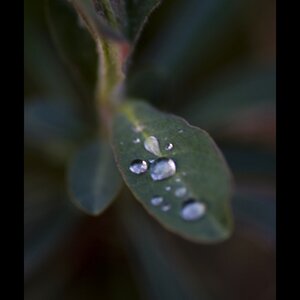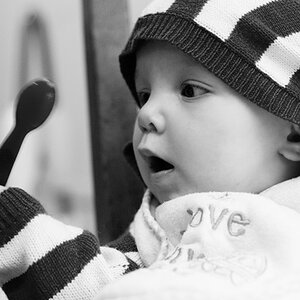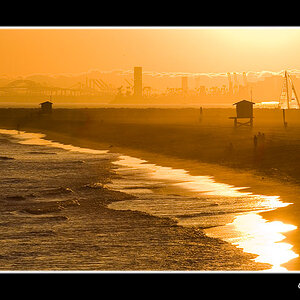Tim Tucker 2
No longer a newbie, moving up!
- Joined
- Jun 8, 2017
- Messages
- 333
- Reaction score
- 241
- Can others edit my Photos
- Photos OK to edit
I was reading up on Thomas Young and how after Newton he made the connection that the system of primary colours and how it worked was really describing the mechanics of the human eye and not the fundamental nature of light itself. When I came across a description of an early two colour system.
Basically it involved taking two B&W negs of the same scene through opposing colour filters. Then creating a positive from that neg and projecting it back through the same colour filter superimposing both on a screen. What I think they were experimenting with was just how little information the eye needs in order for you to create a full colour understanding.
So I decided to see if I could simulate it with digital and see what the results might have been.
I started with a suitable, but digitally processed image:

I then simulated a B&W positive shot through a filter that's slightly the orange side of yellow:

Then simulated how this would look if projected back through that filter, (its a solid colour overlay of H:52 S:76 B:96 set to *colour* blend mode):

I then did the same with a simulated filter that was just to the cyan side of blue:

And again simulated how this would look projected back through the filter (H:216 S:75 B:91):

Then simply overlaid the blue at 50% opacity on top of the yellow:

Though well short of a full gamut it's also quite impressive how colourful it looks considering how little actual colour information is contained.
Basically it involved taking two B&W negs of the same scene through opposing colour filters. Then creating a positive from that neg and projecting it back through the same colour filter superimposing both on a screen. What I think they were experimenting with was just how little information the eye needs in order for you to create a full colour understanding.
So I decided to see if I could simulate it with digital and see what the results might have been.
I started with a suitable, but digitally processed image:
I then simulated a B&W positive shot through a filter that's slightly the orange side of yellow:
Then simulated how this would look if projected back through that filter, (its a solid colour overlay of H:52 S:76 B:96 set to *colour* blend mode):
I then did the same with a simulated filter that was just to the cyan side of blue:
And again simulated how this would look projected back through the filter (H:216 S:75 B:91):
Then simply overlaid the blue at 50% opacity on top of the yellow:
Though well short of a full gamut it's also quite impressive how colourful it looks considering how little actual colour information is contained.
Last edited:





![[No title]](/data/xfmg/thumbnail/42/42253-fef7e43227f484b1a95dd6d85c03bd40.jpg?1619740063)



![[No title]](/data/xfmg/thumbnail/31/31012-f5e0c7cdea2f2c3e44737e3f61c2461a.jpg?1619734567)
![[No title]](/data/xfmg/thumbnail/37/37135-37494dce30fd59534347332f715b7f8c.jpg?1619737884)
![[No title]](/data/xfmg/thumbnail/37/37136-40f690dc7da693c09d7c99c3782954b8.jpg?1619737884)

![[No title]](/data/xfmg/thumbnail/36/36392-ee7dc51c9be334b9979003f6316db12e.jpg?1619737547)